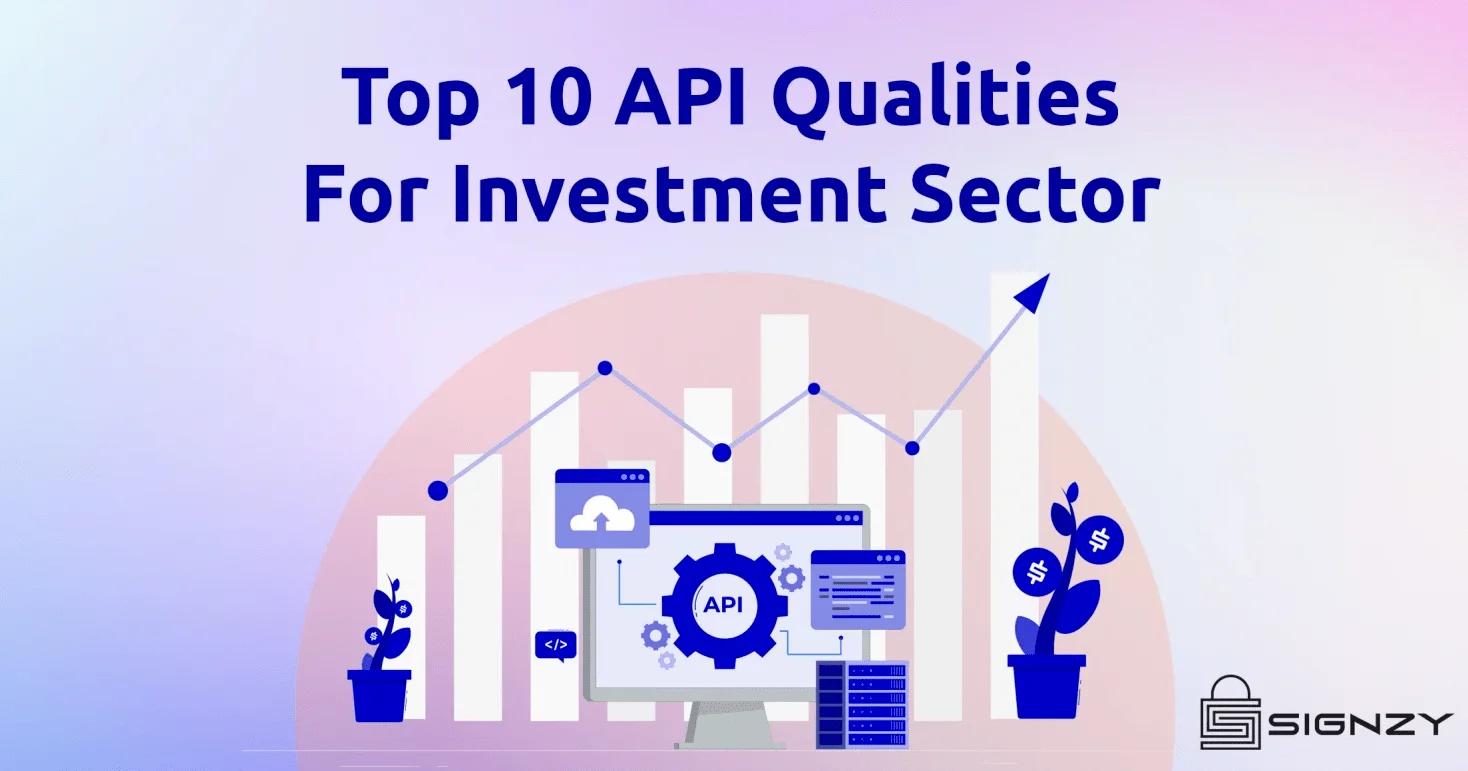Top 10 Must Have API Qualities For Business Growth
According to MarketsandMarkets, the API management sector is projected to be worth $5.1 billion by 2023, at a CAGR of 32.9%. The lion’s share of this comes from the investment and financial technology sectors. Although the number of transactions might be relatively low, the amounts transferred are rather high here. That’s where API is revolutionizing the ecosystem.
APIs have long been hailed as the foundation for revolutionizing financial technology in the investment sector. However, not all APIs are made equal, despite their ability to alter how investment data is maintained and moved within the fund sector. Some qualities are essential when looking at an API-first solution for investment management:
1) Security In The Investment Sector
Any modern API will include strong validation, encrypted transmission, and robust authentication (at a bare minimum). In addition, the sensitive customer data that is virtually always stored by investment platforms (such as names, addresses, portfolio holdings, and national insurance numbers) needs to be protected. Errors are unacceptable when it comes to safeguarding your clients’ data.
2) Low Entry Barrier
New API users ought to have a low entrance barrier. We discover that a standard like OpenAPI (also known as Swagger) gives developers a comfortable experience. Shortening deployment times will also be assisted by accessing Software Development Kits (SDKs). A solid SDK will handle the most mundane activities, allowing users to tackle their business growth problems immediately (e.g., building a new asset allocation algorithm or integrating with a new custodian).
3) Apt Documentation
Any API you use should be thoroughly documented and include numerous examples. Both the technical elements of the API and use-cases should be covered in the documentation. For instance, “How do I execute a valuation with a custom price source?” or “What are the minimal field names and data types required to update a trade?”
4) Logical Building Blocks With Synergy
You would want logical and practical abstractions and resources represented via API endpoints. For instance, a different Instruments and Holdings endpoint will be available on practically all investment management platforms. These endpoints ought to operate in unison (we call this composability). For example, you should be able to take the details of the instruments from the Holdings response and use these to call for more information about the instruments from the Instruments endpoint.
5) Adopt Premium Standards
A high-quality API should adhere to internationally accepted standards. The onboarding process for new users is improved when familiar standards are used (and applications). An illustration of this is the REST architectural style, which uses the HTTP standard verbs (GET, POST, etc.). As a result, developers don’t need to carefully read the system documentation to realize that a “PUT holdings” request replaces (rather than changes) all of the holdings in your portfolio. Industry standards can also aid in processing API data by applications and machinery. For instance, we prefer JSON because it is supported by rich libraries in all essential programming languages.
6) Consistent And Persistent Implementation
A top-notch API should apply naming conventions and standard features uniformly across all endpoints. For instance, a Holdings endpoint and a Transactions endpoint might need to deliver a reference to an exclusive instrument in an attribute. To provide the best user experience, that attribute should have the same name (perhaps something like InstrumentId) in both endpoints. Standard features across all APIs should also be consistent. For example, do your APIs have any filtering functionality? If so, the operators and syntax used in those filtering statements across all endpoints should be the same.
After determining the mandatory features in an API-first platform, let’s now look at some of how an API-first solution can give you improved access to your investment data.
7) External Systems Integration
By offering a “common language” for these systems to communicate, an API-first platform should enable smooth integration between various systems in your financial technology stack. For instance, an Order Management System (OMS) and a Portfolio Management System will often have a continuous data flow between investment managers (PMS). Therefore, it is possible to guarantee that both systems are constantly updated with accurate data by using an API-first platform as the foundational integration layer. To ensure that your portfolio managers are constantly making decisions based on the best information, for instance, you might want orders raised from the PMS to reach the OMS promptly and for the PMS to be updated with transactions from the OMS in real-time.
8) Data Access Control
Granular entitlements that are simple to administer will be present on an excellent API-first platform, giving administrators complete control over the data that particular users and groups are permitted to access. With everyone having simple access to the information they require but no one having access to data they shouldn’t, you will be able to achieve the ideal data entitlement.
9) Rapid Data Onboarding
For a client, do you need to onboard a new ESG data set? Or have your data strategists found any further information that could be mined for alpha? Your teams will be able to quickly extract the most value possible from new data if you have a reliable pipeline that pumps it into your ecosystem and has an intuitive API with a flexible data model. This is the evolution in financial technology we seek for business growth.
10) Transparency For End-Users In The Development Process
API suppliers can easily involve customers in the development process thanks to the microservice model of API-first platforms, where loosely connected services are delivered and maintained individually. In addition, users can test new functionality early and take part in the feedback loop during early revisions of an API endpoint thanks to the separation of endpoints into “Production,” “Beta,” and “Experimental.”
Why Choosing An API Provider is Crucial
As the sector deals primarily with large amounts of money, there is no space for even the slightest errors. Mostly these errors are human-made. Thus one of the prerequisites you can have while transforming your processes is to automate the processes with a reliable decision engine. This should be done without compromising the investor’s experience or their safety.
With Signzy’s No-code AI-driven decision engine integrated API that’s fully customizable, you will get the apt resources you seek. In addition, we have a dedicated collection of Investment APIs that includes investor onboarding features, verification processes, and much more. Check it out here.
About Signzy
Signzy is a market-leading platform redefining the speed, accuracy, and experience of how financial institutions are onboarding customers and businesses – using the digital medium. The company’s award-winning no-code GO platform delivers seamless, end-to-end, and multi-channel onboarding journeys while offering customizable workflows. In addition, it gives these players access to an aggregated marketplace of 240+ bespoke APIs that can be easily added to any workflow with simple widgets.
Signzy is enabling ten million+ end customer and business onboarding every month at a success rate of 99% while reducing the speed to market from 6 months to 3-4 weeks. It works with over 240+ FIs globally, including the 4 largest banks in India, a Top 3 acquiring Bank in the US, and has a robust global partnership with Mastercard and Microsoft. The company’s product team is based out of Bengaluru and has a strong presence in Mumbai, New York, and Dubai.
Visit www.signzy.com for more information about us.
You can reach out to our team at reachout@signzy.com.
Written By:

Signzy
Written by an insightful Signzian intent on learning and sharing knowledge.



